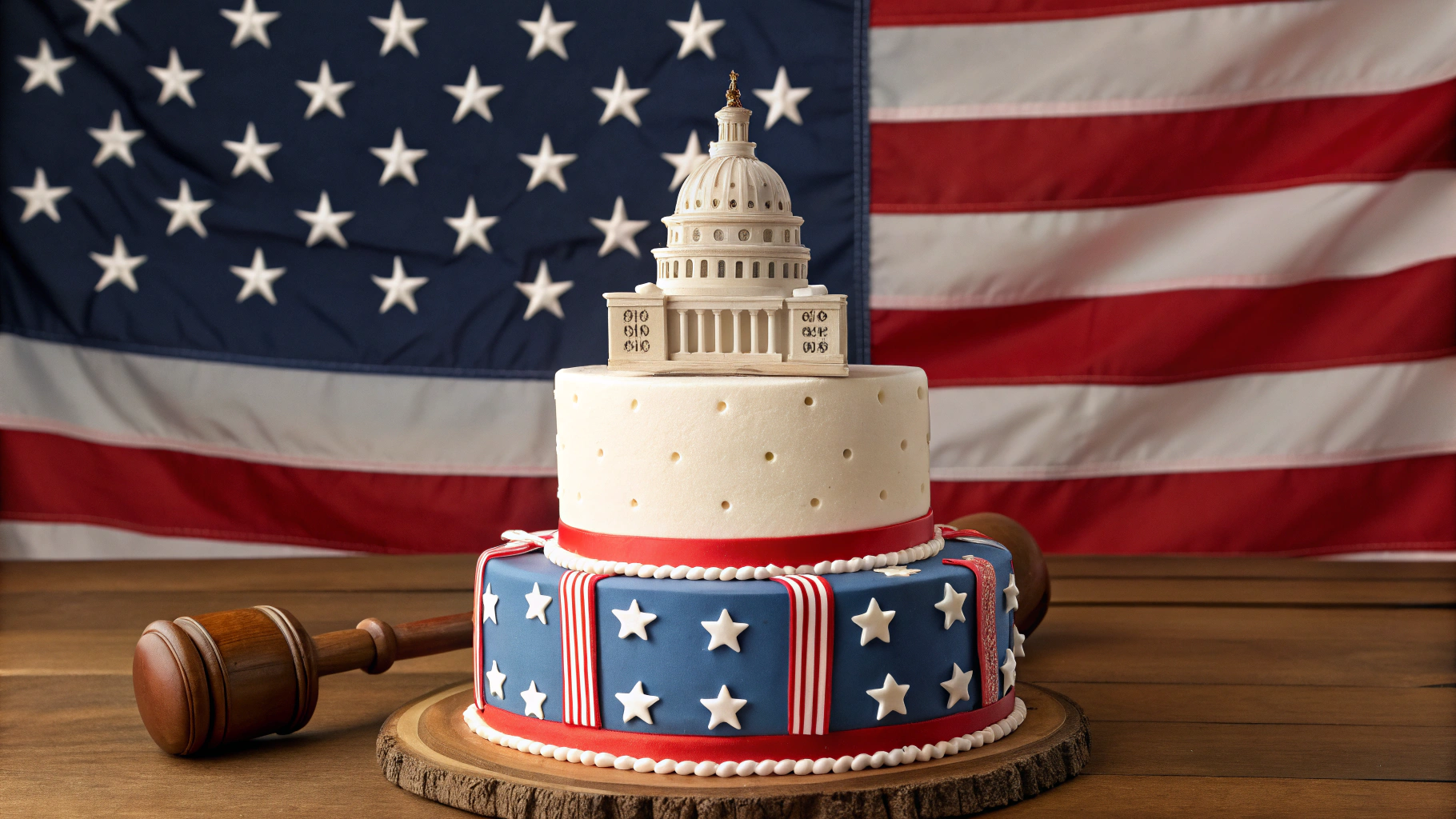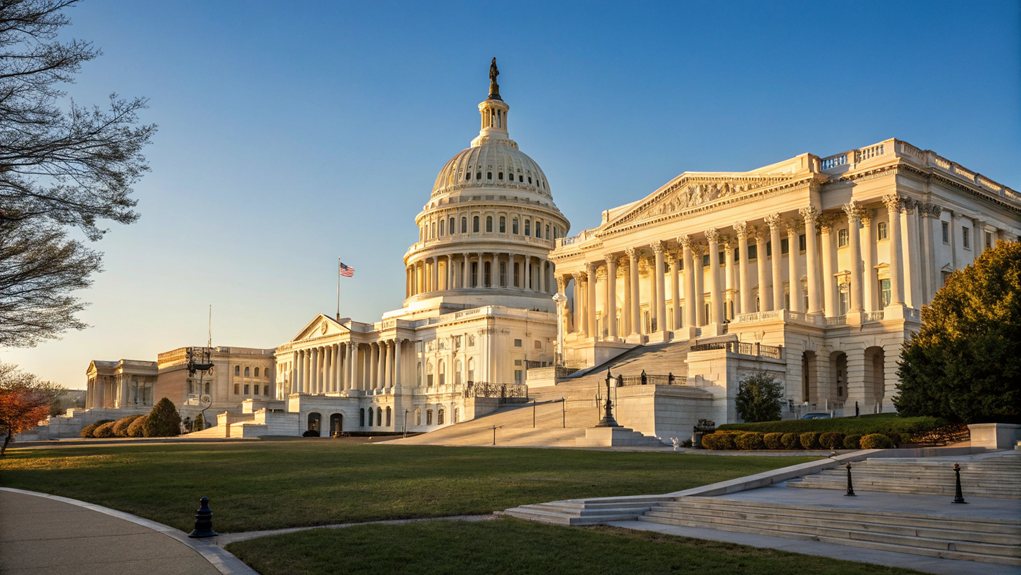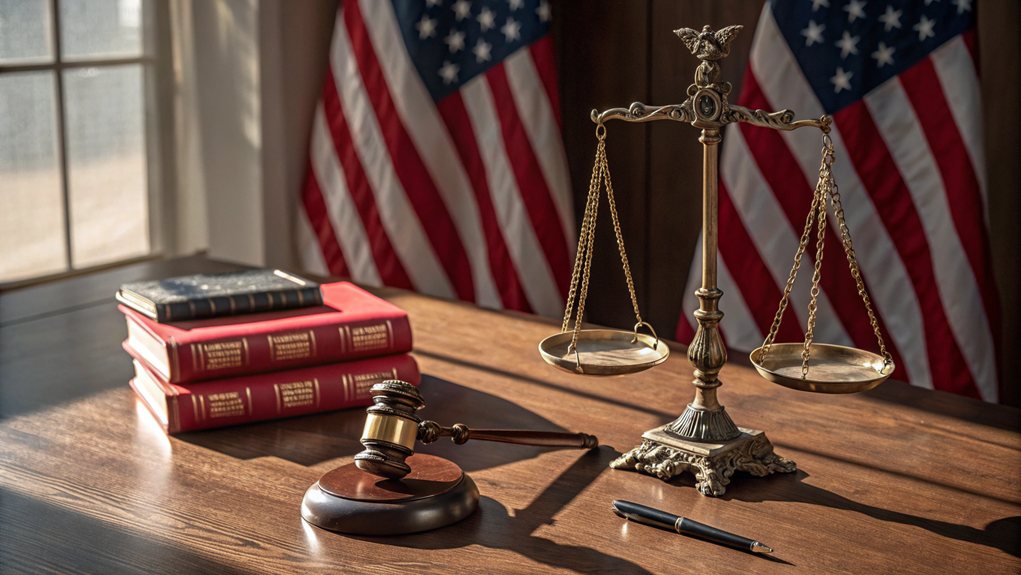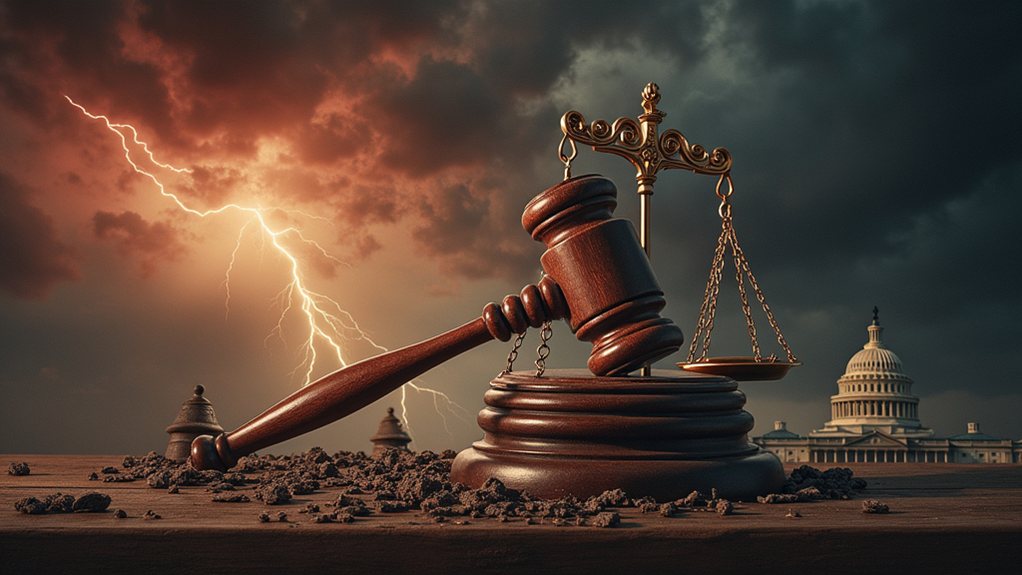The U.S. government is a fascinating three-ring circus, folks. You've got the legislative branch, the lawmakers who draft bills and play budget games. Then there's the executive branch, headed by the President, who takes laws and makes sure they actually happen. Last but not least, the judicial branch interprets everything—think of them as the ultimate referee. Each one watches the others, keeping things in check. Stick around, and you'll uncover more about this wild structure.
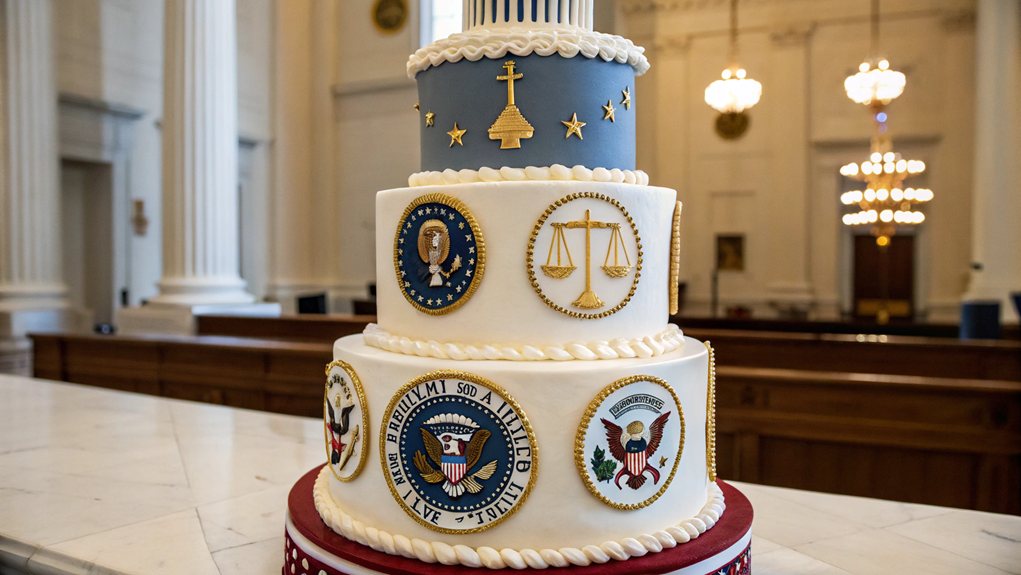
When it comes to understanding the U.S. government, one might think it's as simple as pie, but really, it's more like a three-layer cake with each layer having its own distinct flavor. The U.S. government is divided into three branches: legislative, executive, and judicial. Each of these branches has distinct powers and responsibilities. They keep each other in check, ensuring that no one branch goes rogue. It's all laid out in the U.S. Constitution.
First up, the legislative branch. This is where Congress sits, composed of the House of Representatives and the Senate. They're the law-making wizards, declaring war, regulating trade, and controlling the purse strings. Yes, they can even impeach the President. Imagine that power! They also approve or reject Presidential nominations. Talk about a power play. Each branch has mechanisms to limit others' powers. They also oversee organizations like the CBO, which provides budgetary analysis.
Now, let's move to the executive branch. This is where the President hangs out, along with the Vice President and Cabinet members. They enforce laws, which sounds straightforward, but don't forget the President can veto Congress's decisions. It's like saying, "Nice try, but no." The checks and balances system ensures that the executive branch remains accountable and does not overstep its authority.
Then there's foreign policy, where the executive branch negotiates treaties. No pressure, right?
Finally, we have the judicial branch, which includes the Supreme Court and lower federal courts. Their job? Interpreting laws and ensuring they fit snugly within the Constitution. The Supreme Court's decisions are the final word on federal law, so if they say something's unconstitutional, it's game over for that law.
Now, what ties these layers together? Checks and balances. The legislative branch can override a Presidential veto. The executive can veto laws. The judiciary? They can declare laws unconstitutional.
It's a wild ride, but that's democracy for you. Each branch plays its part, making sure no one gets too comfy in their power. So, while it may seem complicated, that's the beauty of it—an intricate dance of power and responsibility.
Frequently Asked Questions
What Are the Main Differences Between Federal and State Government Branches?
Federal and state government branches? Oh, they're like siblings fighting for attention.
The federal government has a centralized setup, handling big stuff like wars and treaties. States? They're all about local drama and education.
Sure, they mimic the feds with branches, but their powers can differ wildly. Federal laws usually win the argument, but states get to throw their weight around on local issues.
It's a constant tug-of-war, and the stakes? Pretty high.
How Are Government Branches Funded and Supported?
Government branches get their cash from a few sources. Annual appropriations acts? Yep, that's a biggie. They decide how much each branch gets, like a yearly allowance.
Then there are dedicated collections—think fees and charges. The executive and judicial branches rely on Congress to allocate funds. It's all about that budget process.
Checks and balances? Sure, but it often feels like a game of financial tug-of-war. Welcome to the world of government funding!
Can Branches of Government Influence Each Other's Decisions?
Absolutely, branches of government can influence each other's decisions.
It's like a game of tug-of-war. Congress can override a veto, impeach the President, or reject nominations. The President? He can veto laws and appoint judges.
And the judiciary? They can toss out laws like yesterday's trash if they're unconstitutional.
It's a chaotic dance of power, where each branch tries to keep the others in check. No one gets to have all the fun.
What Happens if a Branch Exceeds Its Authority?
When a government branch goes rogue, chaos isn't far behind.
Think constitutional crises, where trust evaporates faster than a summer ice cream cone. Legal challenges? Oh, they're coming, and they're messy.
Public outrage? You bet. Political polarization spikes, and suddenly, everyone's pointing fingers. It's like a game of blame that nobody wins.
In short, overreach sends shockwaves through the system, leaving it wobbly and unstable, like a Jenga tower on the edge.
How Do Citizens Participate in Government Branch Activities?
Citizens can engage in government activities in a bunch of ways, not just by voting. They attend meetings, volunteer for local projects, or even join advocacy groups.
It's like a buffet of civic engagement. Sure, some might just complain from their couches, but others are out there, planting gardens or lobbying for change.
It's messy, chaotic, and sometimes a total circus. Yet, it's how people make their voices heard. Wild, right?
